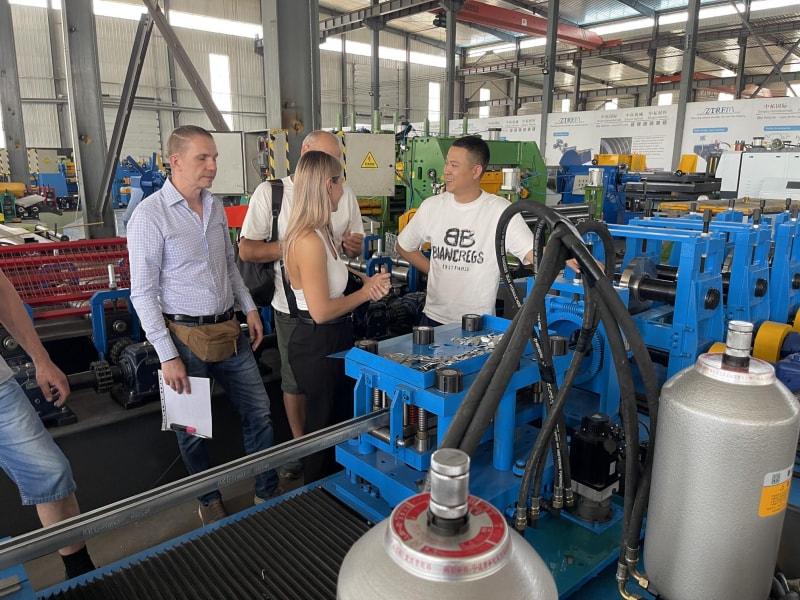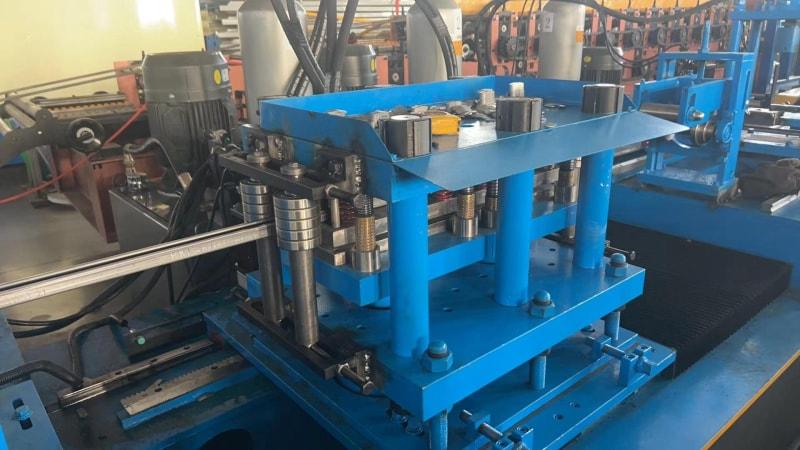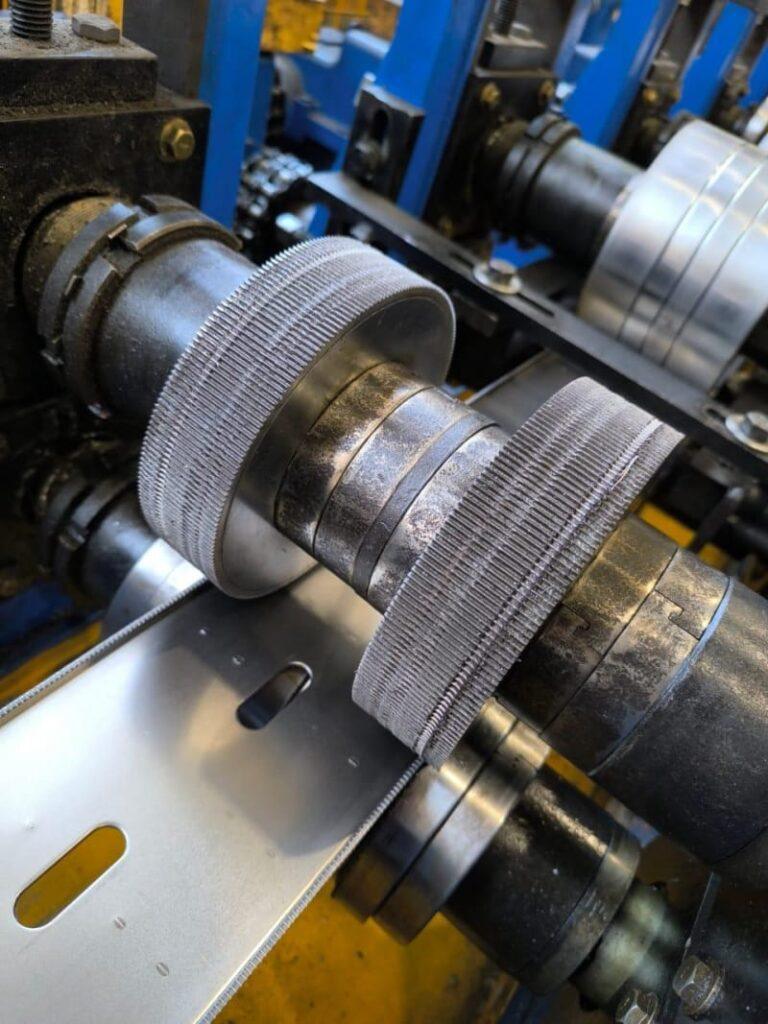The photovoltaic bracket equipment showcased this time stands out for its automation characteristics, achieving automatic translation operation and compatibility with multiple production needs. The equipment is equipped with a hydraulic punching system at the back to ensure machining accuracy, while integrating fully automatic stacking function, significantly improving production efficiency. Of particular note, the device can easily handle the production and processing of stainless steel materials, demonstrating its wide material adaptability.

Analysis of photovoltaic bracket equipment:
1、 Core functions and values
Stable support and positioning: As the cornerstone of solar photovoltaic systems, the primary task of photovoltaic brackets is to firmly support the photovoltaic panels, ensure their stability and orientation in various installation environments such as the ground and roof, and accurately capture sunlight energy.
Efficiency improvement and power generation optimization: Through the designed installation angle and direction adjustment mechanism, the photovoltaic bracket helps the photovoltaic panels receive solar radiation, significantly improving the overall power generation efficiency of the photovoltaic system.
Security protection and resistance to challenges: Made of corrosion-resistant materials, the photovoltaic bracket can effectively resist adverse weather conditions such as strong winds and snow, ensuring the safe and stable operation of the photovoltaic system.

2、 Equipment classification and diversity
There are various installation methods: from ground mounted (simple, pile mounted, foundation mounted) to rooftop mounted (flat, sloping), and then to suspended and fixed, double-sided/single axis tracking and shelving systems specifically designed for large photovoltaic power stations, to meet the installation needs in different scenarios.
Rich material selection: stainless steel, aluminum alloy, hot-dip galvanized steel and other materials are selected to ensure that the photovoltaic bracket still maintains performance and durability in harsh environments.

Feedback and improvement directions for machine testing and inspection:
Despite firsthand experience and rigorous testing by Russian customers, there are still several areas for device performance to be optimized:

Add Türkiye head before cutting: In order to avoid bending deformation of the product after punching, it is recommended to add Türkiye head device before cutting process to ensure that the material is straight and enters the next process.
Strengthening the punching guide system: adding auxiliary guide wheels to control the punching position, ensuring that each punching can be centered, and improving product quality.

Optimize the short material handling process: For short materials below 3 meters, it is recommended to add a material support slide after cutting to facilitate subsequent material receiving operations and improve production efficiency.
Accelerated automatic changeover capability: The current equipment still requires a lot of manual assistance during the changeover process. It is recommended to further develop and upgrade, shorten the changeover time to a shorter time, such as completing it within half an hour, to further improve production flexibility and efficiency.
